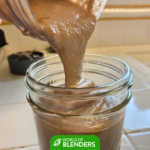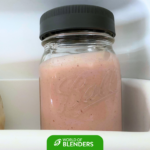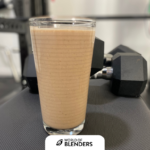This post may contain affiliate links. If you use these links to buy something we may earn a small commission. Thanks.
Protein shakes are my favorite way to hit my daily target for protein intake.
I’ve been powerlifting for years and so I’m usually hitting 250-300g of protein a day. Shakes are the only way I can do that without eating chicken all day long.
I’ve made hundreds of protein shakes and I’ve tried just about every possible liquid, fruit, veggie, or other random ingredient possible.
Today I’m going to help you find the best ingredients to mix with protein powder to make amazing shakes. We’ve also got a bonus of 11 different foods you can make with protein powder to get more protein in your diet.
- The 6 Best Liquids to Mix with Protein Powder
- 31 Delicious Ingredients to Mix with Protein Powder for Protein Shakes
- 11 Recipes to Mix with Protein Powder
- Choosing the Right Protein Powder
- Common Questions About Mixing Protein Powder
- Can you mix things with protein powder?
- Why can’t you mix protein powder with dairy?
- What can I mix with protein powder for flavor?
- Do you have to mix protein powder with something?
- Can you mix whey protein with anything?
- Is it better to mix protein powder with milk or water?
- Can you put protein powder in curry?
- Can you put protein powder in eggs?
- Is it OK to mix protein powder with yogurt?
- Our Verdict: The Best Ingredients to Mix with Protein Powder
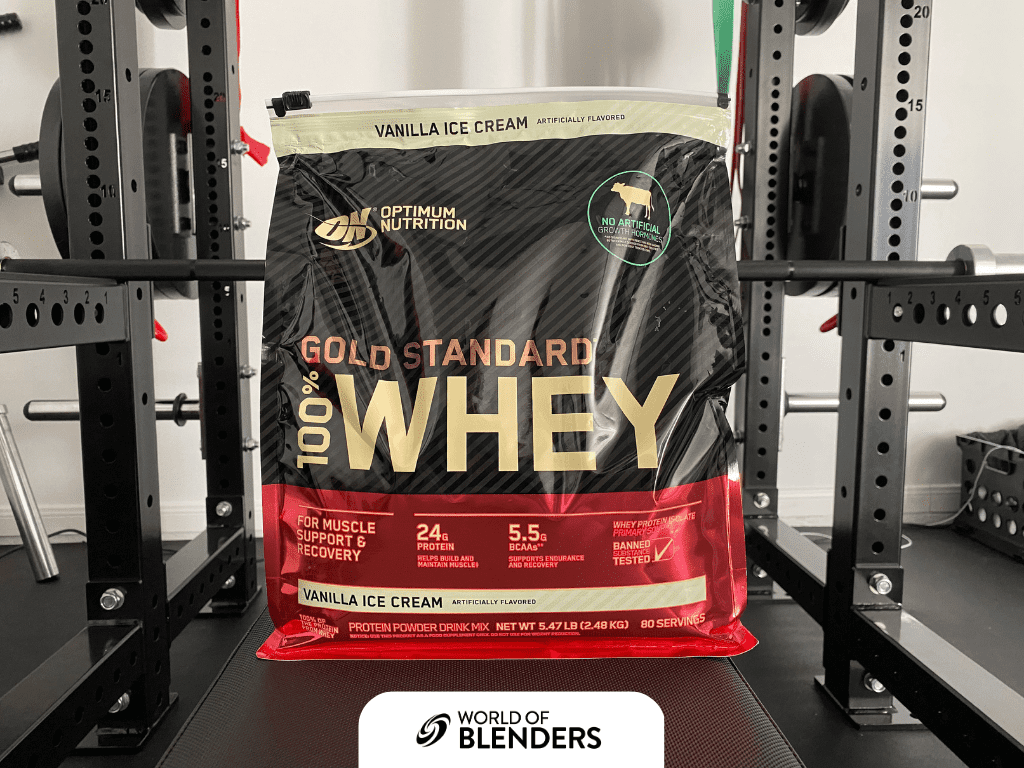
The 6 Best Liquids to Mix with Protein Powder
The two essential ingredients for the most basic of protein shakes are your protein powder and your liquid. If you want to keep things super simple, that’s all you need. If I’m in a hurry, I’ll dump a scoop of whey into a 6oz of water and call it a day.
You can make protein shakes with milk or water, but there are other options you may not have considered!
- Water – The advantages of mixing protein powder with water are that it is easy, cheap, quick, and convenient. There are no calories in water, and a water-based protein shake will help to keep you hydrated. Water is ideal for making weight loss protein shakes because it’s calorie free.
- Milk – Milk is the most popular base for protein shakes cause it gives you a thicker, sweeter, and creamier shake. Unlike water, milk adds calories, protein, vitamins D, B12, and B2 (riboflavin), phosphorous and potassium. Milk is one of the best ways to make protein shakes thicker.
- Plant-based milk – If you’re lactose intolerant, you can go with a dairy free milk alternative like almond, soy, oat, and coconut milk. Almond milk is one of the best milk alternatives for protein shakes.
- Coconut water – If you’re looking for something a bit more refreshing or fruity, you can use coconut water. It’s very sweet and goes well with fresh fruit and fruit-flavored protein powders. It’s also a good source of electrolytes, which makes coconut milk a particularly good choice after exercise.
- Fruit juice – There are lots of different fruit juices available, and they all mix well with protein powder. Fruit juices work particularly well with vanilla or fruity protein powder flavors. Just remember that fruit juice will add calories to your protein shake and you may want to avoid juices that contain added sugar.
- Iced coffee – If you’re looking for a caffeine hit as well as a protein boost then mixing your protein powder with iced coffee is a great solution. The flavor of iced coffee pairs especially well with vanilla or chocolate-flavored protein powders.
No matter what liquid you pick, you can freeze protein shakes for up to 2-3 months if you want to make a big batch at once! If you want to store protein shakes in the fridge, they’ll last for 3-4 days.
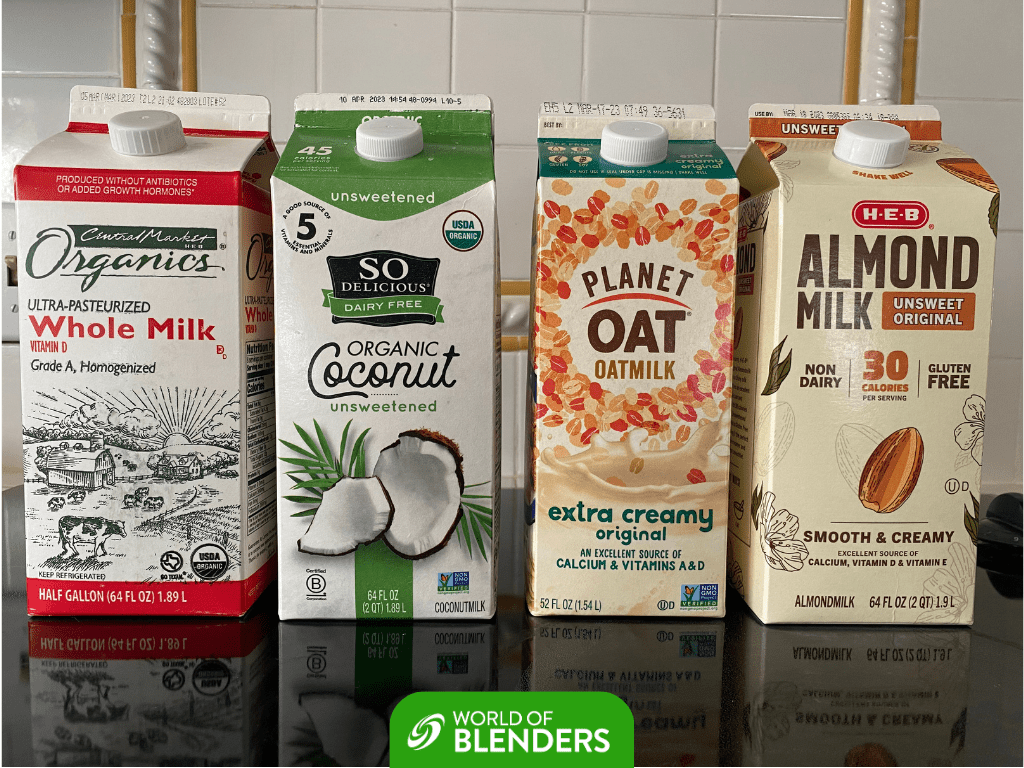
31 Delicious Ingredients to Mix with Protein Powder for Protein Shakes
Once you’ve chosen your protein powder and base liquid, the next step is to decide which dry ingredients you want to include. If you’re worried about time and clean-up, you can simply make a protein shake the night before you plan to drink it.
Dry ingredients can be split into four broad types:
- Nuts, seeds, and grains
- Dairy and dairy alternatives
- Fruits
- Vegetables
Below, you’ll find 31 of my favorite dry ingredients to mix with protein powder.
1. Nuts, Seeds, and Grains
- Oats – Thicken your protein shake while adding fiber and providing slow-release energy. Oats are one of our favorite ingredients in our list of protein shakes for weight gain.
- Nut butter – Whether you choose peanut butter or another type of nut butter, this ingredient will make your protein shake or smoothie more thick and creamy, while also providing a dose of healthy fats.
- Chia seeds – Benefit from omega-3 fatty acids while also thickening up your protein shake.
- Flax seeds – If you enjoy a nutty flavor and like the idea of increasing your fiber and omega-3 intake, flax seeds could be the choice for you.
- Hemp seeds – Add healthy fats and even more protein with hemp seeds. Like other kinds of seeds, they’ll also help to thicken your shake.
- Quinoa – Cooked quinoa can be blended into a protein shake to thicken it up, provide a nutty taste, and add even more protein.
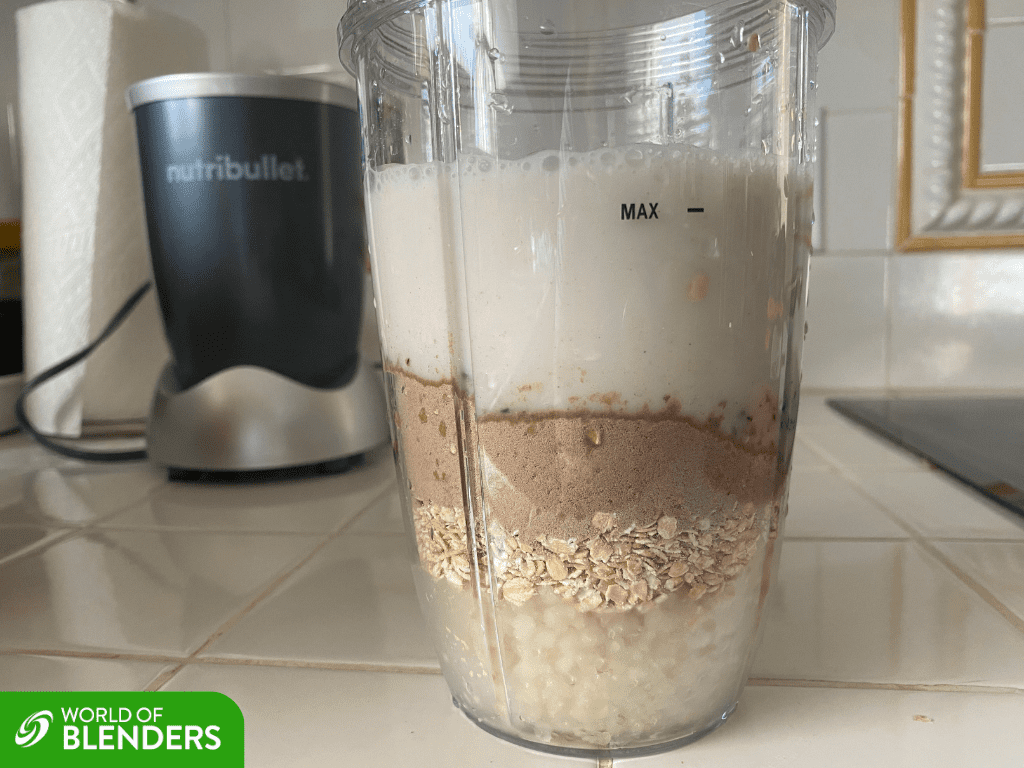
2. Dairy and Dairy Alternatives
- Greek Yogurt – Thick, creamy, and high in protein, Greek yogurt is both filling and nutritious.
- Cottage cheese – A soft, creamy cheese that is high in protein.
- Ricotta cheese – A mild and creamy cheese, ricotta is perfect for a sweet and creamy breakfast or dessert shake.
- Cream cheese – Looking for a rich protein shake? This soft cheese should be at the top of your ingredient list.
- Tofu – Adds creaminess and thickness to a protein-packed smoothie, without adding much flavor. Silken tofu is best as it is soft, smooth, and easy to blend.
3. Fruits
- Banana – Sweet and creamy banana is packed with potassium and fiber. It’s also one of the most popular ways make a protein shake taste better!
- Apple – Another great source of fiber, apple is a sweet, crisp, and refreshing option.
- Berries – As well as adding a delicious taste, berries such as strawberries, raspberries, and blueberries are a fantastic source of antioxidants.
- Oranges – Combine the citrus flavor of oranges with a fruit flavor protein powder to make a fruity drink that is full of vitamin C.
- Pineapple – Enjoy a refreshing tropical taste, and improve your digestion too, thanks to the bromelain enzymes found in pineapple.
- Mango – Naturally sweet and tropical, mango is a good source of vitamin C and antioxidants.
- Peaches – Another sweet fruit, though one with a more subtle flavor, peaches will add potassium and vitamins A and C to your shake.
- Grapes – As well as a sweet taste, grapes contain vitamins C and K, potassium, and antioxidants.
- Pears – Like grapes, pears provide vitamins C and K, potassium, and plenty of fiber too.
- Cherries – Add a tart flavor to your protein shake, along with lots of antioxidants that help to reduce inflammation.
- Grapefruit – This tangy and refreshing citrus fruit contains vitamins, minerals, fiber, and antioxidants, and helps with digestion too.
- Avocado – Add avocado to give your protein shake a rich and creamy texture, while also boosting your daily dose of healthy fats. Avocados will increase the calories in protein shakes quite a bit!
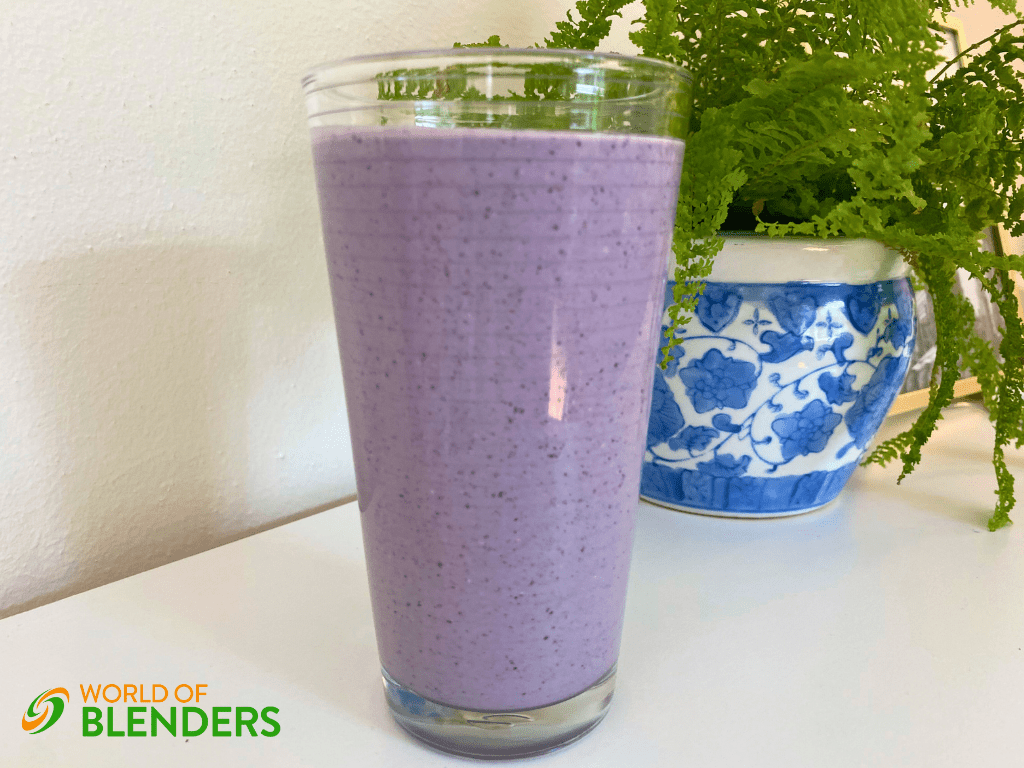
4. Vegetables
- Spinach – As a leafy green vegetable with a mild flavor, spinach is a subtle addition to your shake that will help to support healthy bones, eyes, and immune function.
- Kale – Enjoy a nutrient boost and give your shake a slightly earthy flavor. Kale contains vitamins A, C and K, manganese, and fiber.
- Carrots – Naturally sweet, carrots are a fantastic source of Vitamin A and beta-carotene, which protects the body from free radicals.
- Beets – Earthy in flavor and a good source of fiber, beets can improve digestion and leave you feeling full for longer. Some studies have also shown that beet juice can help manage blood pressure.
- Cucumbers – Refreshing and hydrating, cucumbers are a great way to add water and fiber to your shake.
- Celery – Like cucumber, celery is a fiber-rich, low-calorie addition to a protein shake.
- Sweet potato – Naturally sweet and creamy, sweet potato will make your protein shake thicker while adding fiber and vitamin A.
- Cauliflower – The subtle nutty and earthy flavor of cauliflower won’t overwhelm other ingredients, but cauliflower will make your shake creamier and add vitamins, minerals, and antioxidants.
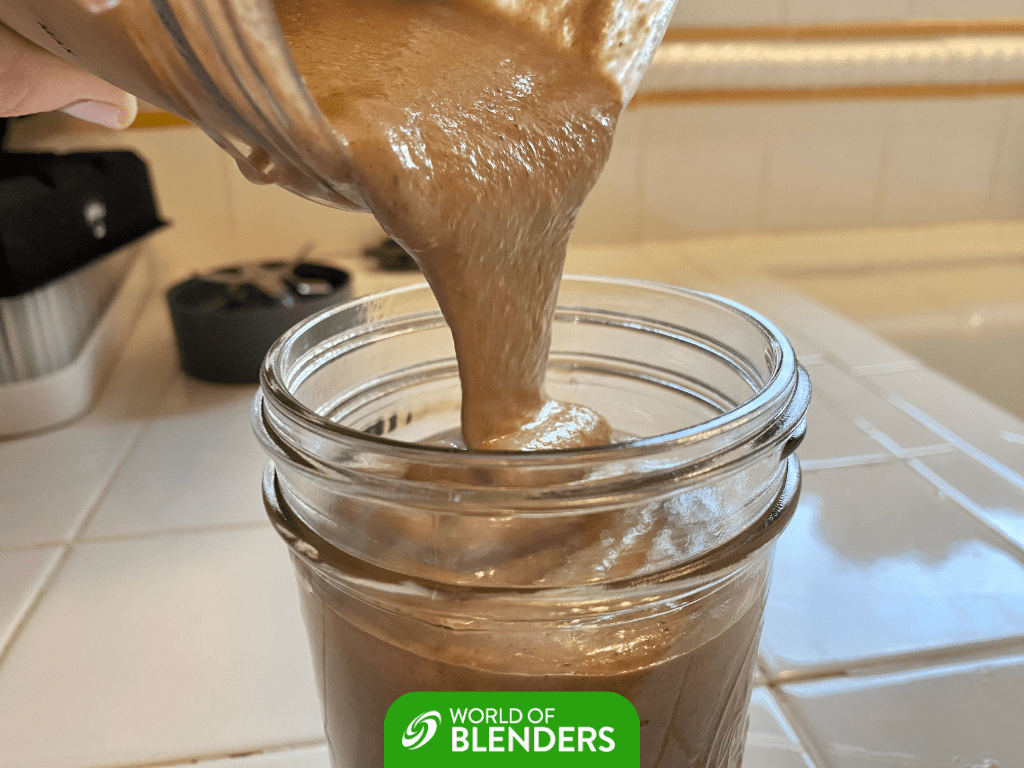
11 Recipes to Mix with Protein Powder
Protein shakes and smoothies aren’t the only ways to consume protein powder. You can add protein powder to a bunch of different foods.
From breakfasts to desserts, baked snacks to main meals, these are 11 of the best dishes to mix with protein powder.
- Oatmeal – A healthy breakfast that is full of fiber, oatmeal with protein powder can help you stay energized and feel full for longer. Add fruit, nuts, or seeds for flavor and a further nutritional boost.
- Pancakes – Make protein-packed pancakes by mixing protein powder into your pancake batter. Next, add oats for carbs and fiber, and Greek yogurt for even more protein and to stop the pancakes becoming too dry.
- Waffles – When making waffles, simply swap some of the flour with vanilla or chocolate protein powder. Waffles make a great breakfast and taste delicious when paired with yogurt and berries.
- Brownies – It may not be the healthiest snack, but you can add protein powder to brownie mixture. All you need to do is swap some of the flour with protein powder, experimenting with how much to find the right texture.
- Muffins – To make protein muffins, simply take any muffin recipe and replace some of the flour with protein powder. The powder may make your muffins more dense but you can offset this by using a small amount of powder, adding more liquid, adding baking powder, letting the batter rest, and avoiding over-mixing.
- Cookies – As with muffins, to make protein powder cookies, simply swap some of the flour for an equal amount of protein powder. Protein powder cookies can often crumble easily, so you may want to use a binding agent such as eggs, nut butter, or mashed banana to help hold your cookies together.
- Protein balls and bars – Mix protein powder with oats, dates (important for binding the protein balls or bars together), nut butter, and dried fruits, then shape into balls or bars. Optionally add other ingredients, such as chocolate chips, to achieve your desired flavor.
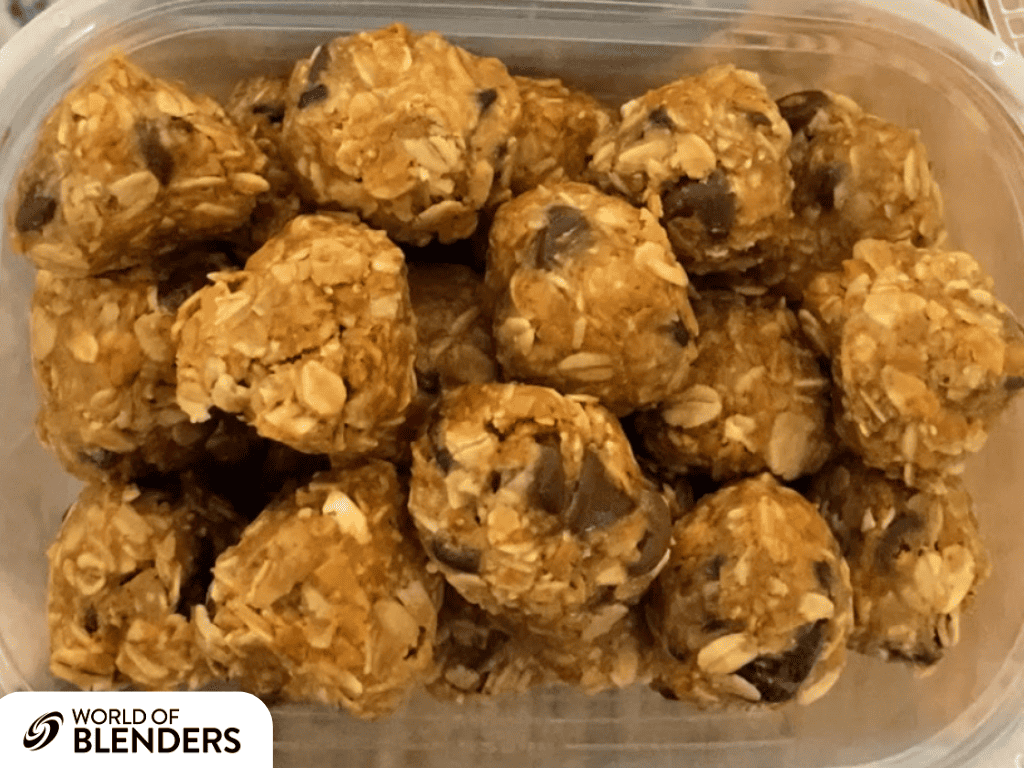
- Yogurt – For a protein-packed yogurt snack, mix some protein powder into regular yogurt or Greek yogurt, then combine with fresh fruit, granola, and honey.
- Burgers and meatballs – Meat is already full of protein but it is possible to add even more with protein powder! Simply mix unflavored protein powder in with the meat. Not only will the powder give you a protein boost, it will also help to bind the burgers or meatballs together.
- Mashed potato – Mash unflavored protein powder into your mashed potatoes to create a higher protein meal without affecting flavor.
- Ice cream – Add unflavored, chocolate or vanilla protein powder to your ice cream before it freezes to give your dessert a hidden protein boost.
Choosing the Right Protein Powder
When mixing protein powder with other ingredients, it’s important to choose the right type of protein powder and a flavor of protein powder that complements the taste of the other ingredients in your recipe.
3 Types of Protein Powder
The three most popular types of protein powder are whey protein powder, casein protein powder, and plant-based protein powder.
- Whey protein powder – Derived from the watery part of cow’s milk, whey protein is a complete protein, which means it contains all the amino acids needed to build and repair muscle. Whey protein is easily digested, mixes well with liquids, and is available in lots of flavors. If you’re trying to mix protein powder without a shaker, whey is the easiest!
- Casein protein powder – Also from cow’s milk, casein protein powder is harder to digest than whey protein. This means that casein protein powder provides a slow and steady supply of amino acids to muscles, which is good for muscle recovery over a longer time, such as overnight. Like whey protein, casein is also a complete protein that provides everything your body needs to repair and grow its muscles.
- Plant-based protein powder – The dairy-free vegan option, plant-based proteins include pea, soy, brown rice, and hemp. Like other proteins, plant-based protein powder provides amino acids that support muscle growth and recovery. Some people, particularly those with lactose intolerance, find plant-based proteins easier to digest than whey or casein proteins.
Protein Powder Flavors
There are lots of different protein powders available, so I recommend exploring options and experimenting with different powder and ingredient combinations.
Three of the most popular and widely-available flavors are:
- Vanilla – A classic and enormously popular flavor, vanilla flavored protein powders work well with lots of different ingredients. In my experience, vanilla-flavored protein powder is particularly good with fresh fruit, nuts, and spices.
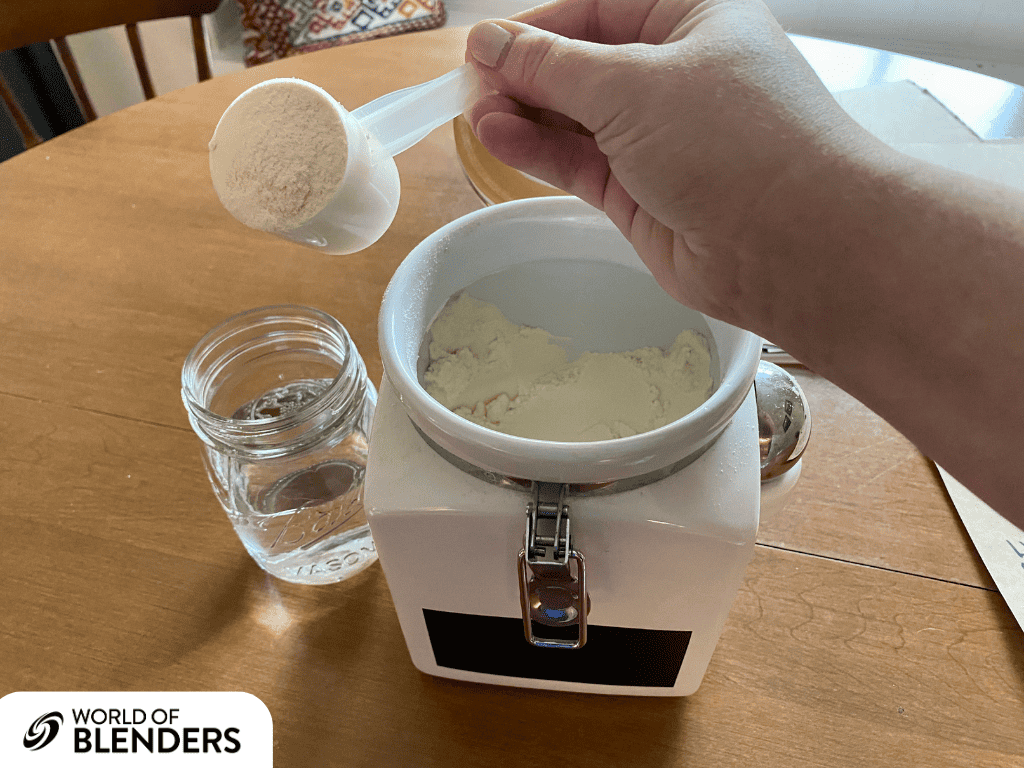
- Chocolate – As you would expect based on the flavors you find in sweet treats, chocolate protein powder works particularly well when combined with flavors like milk, peanut butter, banana, almond milk, or coffee.
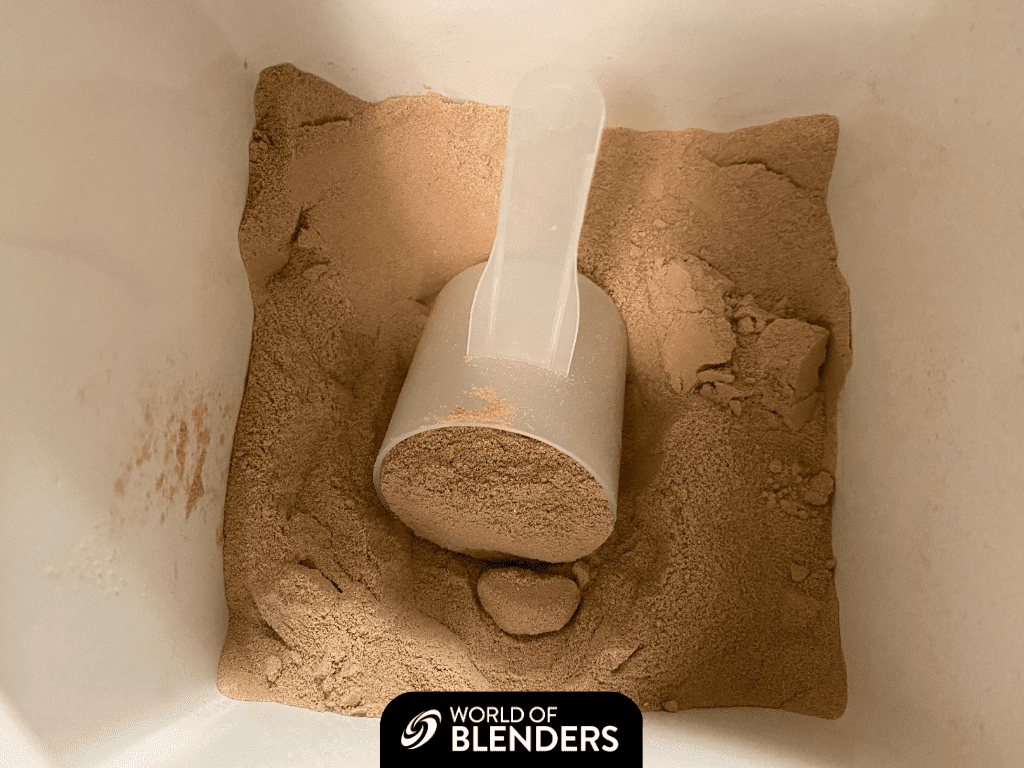
- Unflavored – Good for avoiding artificial flavorings and sweeteners, and with minimal taste that won’t overshadow other ingredients, unflavored protein is the safe choice. However, it’s worth remembering that all protein flavors will add some degree of taste and texture, so you may need to experiment with different products to find an unflavored protein powder that works for you.
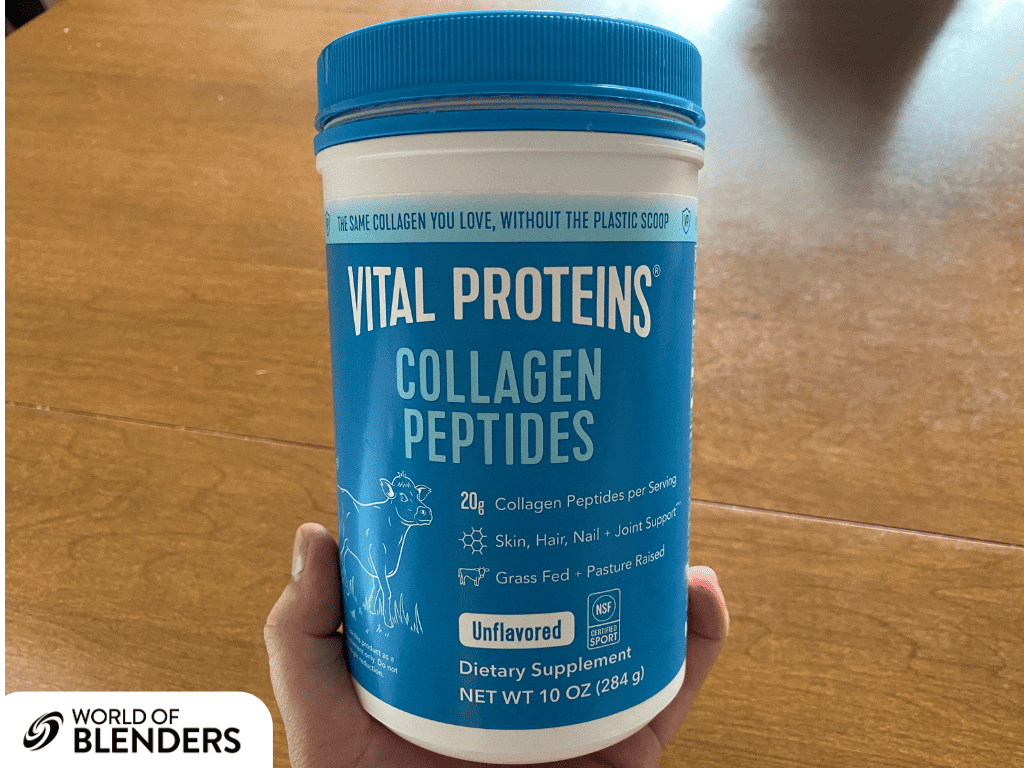
Common Questions About Mixing Protein Powder
Yes, you can mix lots of things with protein powder. Popular things to mix with protein powder include nuts, seeds, grains, dairy products, fruits, and vegetables. You can also cook protein powder into recipes such as pancakes, muffins, burgers, cookies, and ice cream.
You actually can mix protein powder with dairy. In fact, milk and yogurt are two popular ingredients often found in protein shakes and smoothies. Protein powder can be more prone to clumping when mixed with dairy, but it is absolutely possible to mix the two together.
To add flavor to your protein powder, choose a base liquid like milk, fruit juice, or coffee. Then, add more flavorful ingredients, such as fresh fruit, vegetables, nuts, seeds, and grains. Be sure to consider the flavor of your protein powder, liquid, and other ingredients to ensure they go well together.
You should mix protein powder with a liquid such as water, milk, or fruit juice. Protein powder is not designed to be consumed without liquid and doing so can be dangerous. You can also add other ingredients, such as fruit, nuts, seeds, grains, and vegetables.
You can mix whey protein with liquids including water, milk, fruit juice, and cold brew coffee. You can also mix whey protein with fruits, vegetables, nuts, seeds, grains, and yogurt, or bake it into recipes such as cookies or pancakes.
Whether it is better to mix protein powder with milk or water depends on your personal preference and health goals. Water adds no flavor or calories, which is good if you are limiting your calorie intake or if you are lactose intolerant. On the other hand, milk adds thickness, creaminess, sweetness, calcium, and vitamin D.
Yes. Protein powder can be added to most recipes, including curry. Simply mix the powder into the curry sauce. Start with a small amount and add gradually to find the right texture. You should use unflavored protein powder to avoid affecting the flavor of the curry.
Yes. Simply whisk protein powder into eggs before cooking. Adding protein powder to eggs is a good way to boost the protein content of your eggs and will keep you feeling full for longer. Protein powder may thicken your eggs, so add a small amount and increase gradually until you find the right consistency.
Yes. Regular yogurt and Greek yogurt are both popular ingredients found in protein powder smoothies. Mixing protein powder into yogurt will make your shake or smoothie thicker. The yogurt will also provide even more protein, on top of that found in the protein powder, as well as calcium and probiotics.
Our Verdict: The Best Ingredients to Mix with Protein Powder
Which ingredients are the best for mixing with protein powder depends on your own tastes and your health goals, such as whether you’re looking to add or limit the number of calories in your protein shake.
Personally, my favorite liquids to mix with protein powder are milk, water, and iced coffee.
I choose water whenever I want to keep my calorie intake low, and when I want a quick and easy protein shake where the protein powder and other ingredients provide all the flavor.
When I want a bit more flavor, as well as a much-needed energy boost, I mix a chocolate-flavored protein powder with iced coffee or milk.
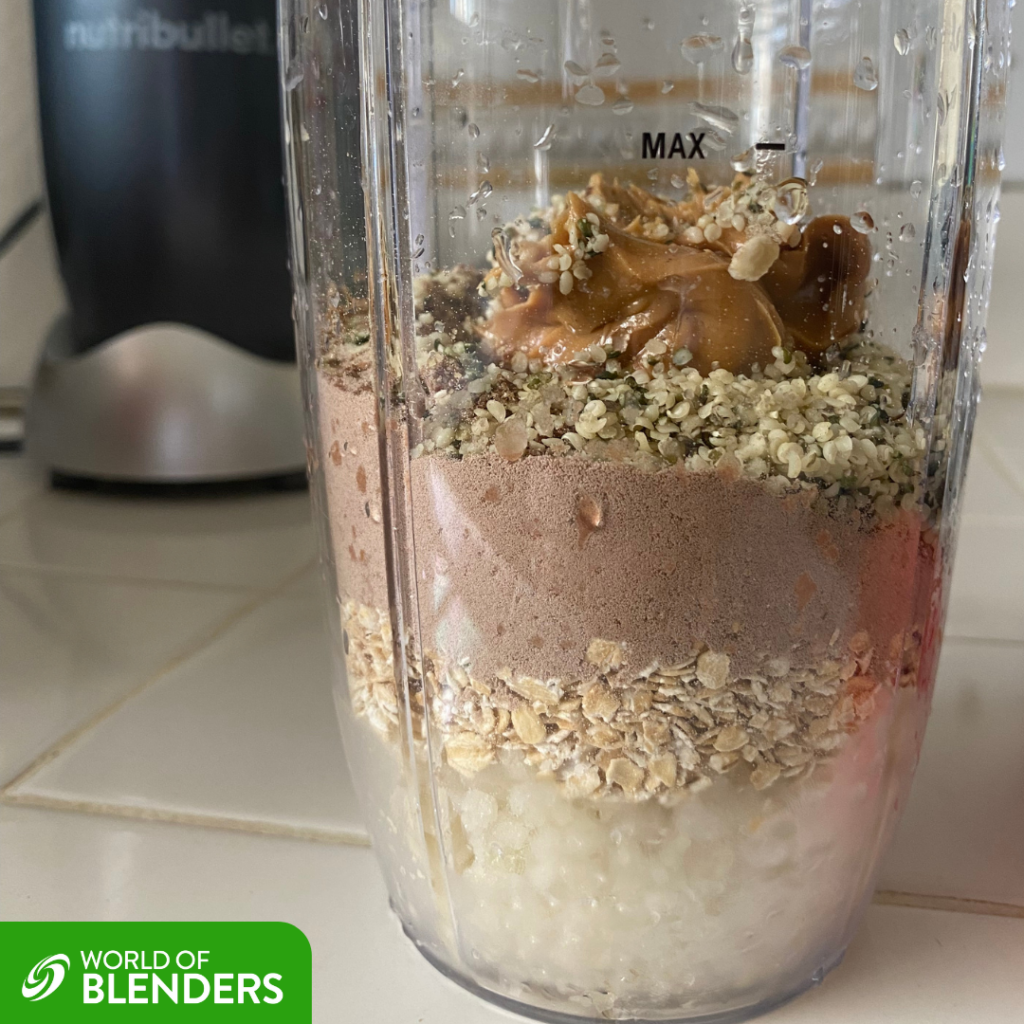
Some of my favorite dry ingredients include peanut butter and banana, when I’m making a sweet protein shake, and spinach and oatmeal when I’m making a savory snack.
Of course, it’s always good to try new recipes and explore new flavor combinations, so I’d encourage you to be bold and combine different ingredients that you think will go well together in order to find the best protein powder recipes for you!
